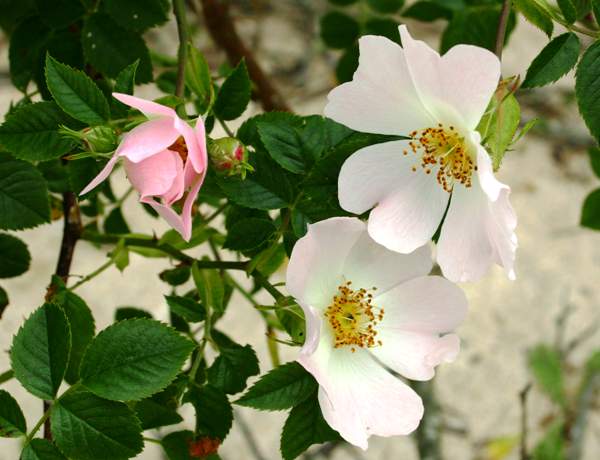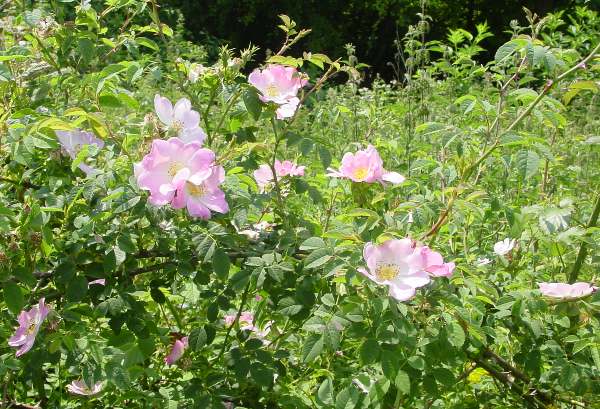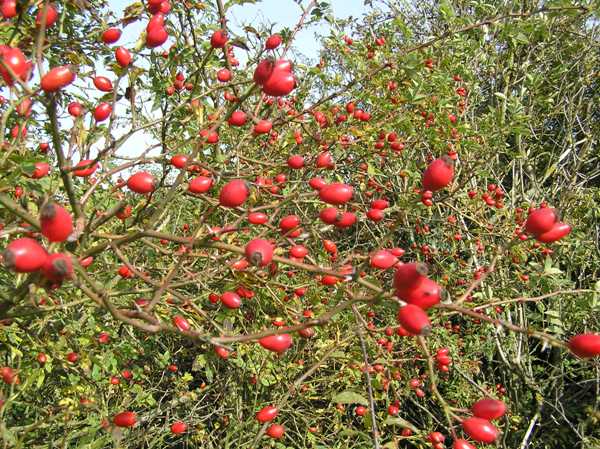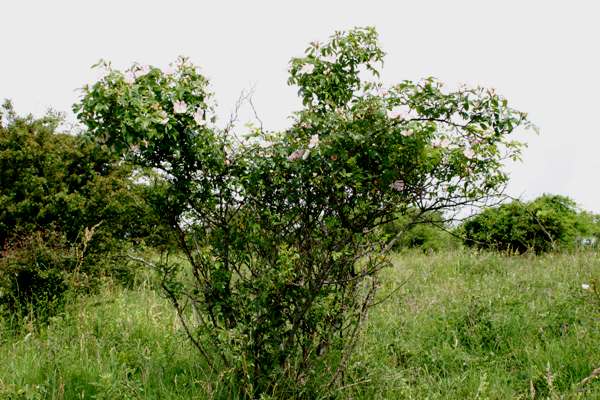Rosa canina - Dog Rose
Phylum: Magnoliophyta - Class: Equisetopsida - Order: Rosales - Family: Rosaceae

Always a joy to see although because of its thorns not one to tangle with, the Dog Rose can be either self supporting or a climber. The tallest specimens almost invariably use other plants for support.
Description
A distinctive perennial with tall arching stems covered in curved thorns, the Dog Rose has dark-green toothed oval-pointed leaves and pink or white five-petalled fragrant flowers 3 to 6cm across.

Distribution
This lovely summer wildflower is very common throughout central Britain and Ireland, while in coastal areas it is generally less evident, and there the low-growing Burnet Rose tends to take precedence. The photographs shown above were taken in Newborough Warren National Nature Reserve in Anglesey, North Wales in June.
Habitat
Rosa canina makeswonderful displays in hedgerows and on woodland edges.
Blooming Times
Dog Rose can sometimes be seen in flower in Britain and Ireland from the end of May until early August, but most years they are at their best during June and July.
Similar Species
There are several wild rose species, including the white Field Rose and the Burnet Rose. Briars, brambles, raspberries and cloudberries are close relatives, while many other wild flowers also belong to the Rose family - Wild Strawberries, Wood Avens, Tormentil, Hawthorn and Crab Apple are just a few examples.

The seeds of roses develop in shiny cases called rose hips. Pictured above are hips of the Dog Rose, which turn bright red in the autumn when they are fully ripened.
Uses
Not surprisingly, the sweet-smelling petals of the Dog Rose have been used in making perfume, while the fruits, known as hips, are used to make rose-hip syrup as well as tea and even a kind of marmalade. There is just one thorny problem that makes gathering rose hips a risky business: the thorns!
Etymology
The specific epithet canina means 'of dogs' and is a rather disparaging term meaning of little or no value - surely quite inappropriate for this much-loved wildflower.

The self-supporting Dog Rose pictured on the left was seen on scrubby chalk downland in Hampshire, England.
Sue Parker's latest ebook is a revised and enlarged second edition of the acclaimed Wildflowers in the Algarve - an introductory guide. Full details here...
Buy it for just £3.95 on Amazon...
Please Help Us: If you have found this information interesting and useful, please consider helping to keep First Nature online by making a small donation towards the web hosting and internet costs.
Any donations over and above the essential running costs will help support the conservation work of Plantlife, the Rivers Trust and charitable botanic gardens - as do author royalties and publisher proceeds from books by Pat and Sue.



